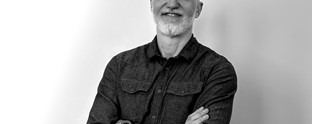Opinion: Is there an approach to design that builds brand loyalty

As a creative director in the current climate, you’re expected to produce strategically-led design. FutureBrand clients tend to be the major players in their field, often with well-established, recognisable identities, long-standing reputations and complex business aims.
This seems to be standard and is not a surprise to anyone in our business. But balanced with the fact that most sectors are now experiencing unprecedented disruption, then those challenges become multiplied by a hundred.
Many brands are now built on the intangible. Consumer insights now commonly come from big data, online behaviour and user analytics, making the whole process both more well-informed but also more complex. As many have noted, the world’s largest taxi company owns no, the world’s most popular media owner creates no content and the world’s largest accommodation provider owns no real estate. Amazing, exciting and different times require different brands.
Brands must reassess their offer not only in light of changing demand, but also changing infrastructure. High street banks tend to look conservative, proving that they are trusted and safe, that trust has repeatedly been betrayed and now the game has changed. Challengers like Starling and Monzo are speaking to customers in different ways – both visually and strategically. Refreshing your identity as a bank is a demanding task in this climate. However, the same rules still apply now as they ever have, brave brands differentiate. NatWest has been both brave and ambitious with its brand and advertising and the company is pushing its digital offer the same way.
When you’re given a brief, inevitably, a core strategic aim is to create an identity that is ‘future proofed’ in some way. Taking iconic brands on a journey through what has made them a stalwart can help discover that ‘a-ha’ moment of inspiration. For example, looking at what has made NatWest a British high street institution resulted in the inspiration to reflect the original brand in the refresh of its visual identity. The aim was to future proof the brand; the inspiration was found in its long history of reliability.
The original symbol (circa 1969) featured in NatWest’s original brand guidelines – a set of three interlocking cubes which represented National Provincial Bank, Westminster Bank and District Bank. It has been part of the brand ever since.
As a designer, I look to create connections. Connected brands make the customer feel that they made the right choice and ultimately build advocacy. This creates experiences that are more than they were expecting, better interactions and consistency creates a connection at an emotional level, beyond the basic interaction of service. Future proofed brands understand the longstanding values of their customers and they’re smart enough to be able to articulate those values as their own. This is how loyalty is built.
Dan Witchell is executive creative director at FutureBrand London












